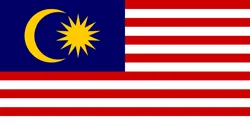Atalanta has played in its present stadium at 21,747 seats Gewiss Stadium located in the Borgo Santa Caterina neighborhood of Bergamo since 1928. Before its debut, Atalanta played at several other venues in Bergamo. From its inception in 1907 and its recognition from FIGC in 1914, the club was not recognized. FIGC in 1914 the club didn't have a specific playing field. It only played games in public spaces such as the Piazza d'Armi and the Campo di Marte in Bergamo. In 1914, the first playing field was constructed in the Via Maglio del Lotto, close to the railway line Bergamo-Milan. It was 90 by 45 meters (295 by 148 feet) and was able to accommodate a seating capacity of 1,000 fans. Because of financial strains due to financial hardships during World War I, though, Atalanta was forced to sell the land that contained its field, which left the stadium without a place to play. In the end the philanthropist and entrepreneur Betty Ambiveri sold the Clementina field, a former site located in Seriate which hosted sports events like cycling, and the team. The new stadium was officially inaugurated in the name of Atalanta Stadium and it hosted 14,000 fans in its inaugural game with La Dominante of Genoa.
As football's popularity grew during the 20th century, Atalanta was in need of a stadium. This new arena was built in Viale Margherita (now Viale Giulio Cesare) to replace the hippodrome which was once on the spot. The construction of Viale Giulio Cesare's new venue took a year, and it was completed in 1928, and it cost 3.5 millions lire. It was named in honor of the fascist Mario Brumana; this was usual during the fascist era of Italy. It was the Brumana stadium was bigger that the Clementina field, with seating capacity of 12,000 people in two tribunes (side stands) as well as a field that measured 110 x 70 metres (360 by 230 feet) and also an athletic track, since it was intended to be part of a larger facility. The stadium was inaugurated on the 1st November of 1928. Atalanta was the first team to play an unofficial match in this stadium (a 4-2 victory over Triestina) The stadium was officially inaugurated on December 23, 1928, in which Atalanta beat La Dominante Genova 2-0 in front of more than 14,000 people.
Following World War II, the stadium was changed to"The Stadio Comunale ("Municipal Stadium") since the fascist regime was no longer in Italy. The expansion of the stadium started in the aftermath of the war. The construction of the South standing (the Curva Sud) began in 1949. A second stand at its north side (the Curva Nord) followed in the 1960s. It was opened in 1971. In 1984, the track that ran through the stadium was taken away in order to increase the stadium's capacity following the club's returning into Serie A after five years. The first game played by the club during 1985-84 Serie A, a 1-1 draw against Inter was attended by an audience of more than 43,000 fans an attendance record at this stadium. Stadio Comunale.
The Tribuna Giulio Cesare was renovated in the first half of the 1990s, as well as the venue was named the Stadio Atleti Azzurri di Italia ("Blue Athletes from Italy") at the time of 1994. Following the tragic death of forward Federico Pisani in a car accident and the Curva Nord was named the Curva Pisani to honor his memory. In the same way to Curva Sud was named after him in 2012. Curva Sud was dubbed as the Curva Morosini, in the year 2012 in honor of the 25-year-old youth academy star Piermario Morosini, who died after a collapse in the field during an Serie B match between Pescara and Livorno. As of 2015, the venue extended its side stands to give views of the pitch only a few metres (feet) off the seats, which was a groundbreaking characteristic of Italian stadiums in the era of.
On May 10, 2017 Atalanta announced the purchase of its stadium from commune to the tune of 8.6 million euros. It became one of the four Serie A clubs to own the stadium that is their home. The purchase allowed the club to approve an overhaul plan to the stadium, because similar to the majority of Italian stadiums, a lot of the structure and facilities were considered to be outdated. The renovation was required to improve the stadium to be in line with UEFA requirements to host matches during UEFA competitions. Since the stadium wasn't yet ready, Atalanta had to play its Europa League home matches at the Mapei Stadium in Reggio Emilia and also its Champions League home matches in the inaugural season were played on San Siro in Milan. Even though they were not playing in Bergamo but due to the extra capacities of San Siro, Atalanta recorded the highest attendance at home of 44,236 in the Champions League knockout stage match against Valencia on February 19, 2020.
In the wake of a sponsorship agreement with electronics firm Gewiss for a minimum of 2025 The stadium was named Gewiss Stadium. Gewiss Stadium 1 July 2019. On the 6th of October, 2019, the new Curva Nord was inaugurated for Atalanta's home game against Lecce It has covered seats for more than 9,000 fans. The following year both stands were given modernization. The Curva Sud had temporary seats built in the concrete. The upgrades enabled Atalanta to play their Champions League matches in Bergamo from 2020-21. The final phase of the project will feature the reconstruction of Curva Sud (mirroring Curva Nord, which is a replica of the newly constructed Curva Nord) that will expand the capacity of the stadium to 25,000 people in addition to the construction of an underground parking garage, as well as other enhancements to the surrounding area of the stadium. It was initially planned to be completed by 2021 but the construction was delayed until the month of February or March 2022. The beginning of construction was extended to the spring of 2024. It is scheduled to be finished in the summer of 2024. Atalanta can continue to play home matches in Gewiss Stadium. Gewiss Stadium during construction.
The stadium located in Bergamo was also utilized as a home field by the local Serie C club AlbinoLeffe from 2003 until 2019 (when they was moved to Gorgonzola) during a time in which AlbinoLeffe was as a member of Serie B and met Atalanta at times. Sometimes, the youth team also competes in games on Gewiss Stadium. Gewiss Stadium, most recently the Supercoppa Primavera in 2021.



 ENG
ENG MYS
MYS 简体中文
简体中文






















 ARG
ARG ITA
ITA DEN
DEN NED
NED COL
COL CIV
CIV SUI
SUI BRA
BRA UKR
UKR ALB
ALB TUR
TUR RUS
RUS SVN
SVN CRO
CRO GUI
GUI ECU
ECU GAM
GAM ETH
ETH SEN
SEN Hebar Pazardzhik until 30 June 2023)
Hebar Pazardzhik until 30 June 2023) CZE
CZE
 CMR
CMR
